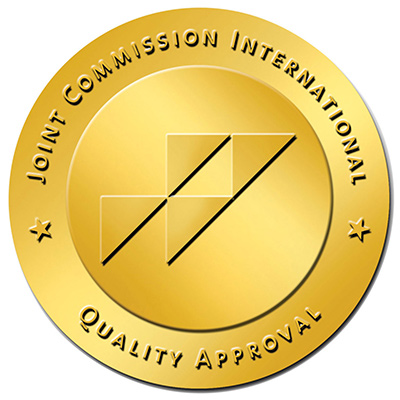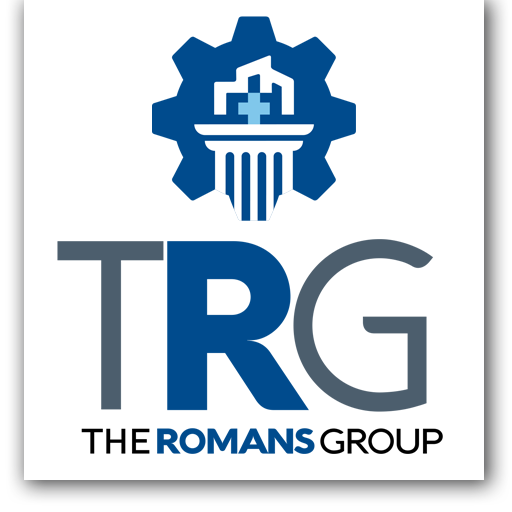
HOSPITAL DESIGN AND COMMISSIONING – SIX PHASE PROCESS
TRG approaches this process through Six Phases with an additional optional Recruitment Phase that will take the Project from concept to operations.
1. Market Survey, Positioning and Feasibility
2. Business Plan
3. Hospital Design
4. Commissioning and Start Up
5. Operations and Accreditation
6. Sustained Operations
These Six Phases are conducted in series. Timelines are expedited with efficient reviews and turnaround of materials. TRG is poised to provide expert support of these Phases and will be dedicated to the long-term success of the hospital or clinic.
As important as these Six Phases are to ensure a successful project, the form of management must be determined prior to groundbreaking. TRG can provide expert services through two options: Advisory Services or Executive Leadership Management. In the advisory role, TRG will bring its decades of experience and its experts to advise the Client or the Management Company that eventually is chosen to manage the hospital. In the Executive Management role, TRG will directly manage the commissioning and startup operations and take the hospital live.
The key to our flexibility are the people we will bring to this project: The Consortium. When we refer to the ‘Consortium’ we visualize a group (of companies) formed to undertake an enterprise beyond the resources of any one member. The arrangement in which several firms pool their talents to undertake a large project that benefits all members of the group.

Recruitment Phase – Optional
Finding a strong partner in the US can be difficult for foreign companies. Choosing a partner with the right experience, prestige and attitude are critical to the success of bringing a US health care organization to our Client. A high quality, successful partner can bring their experience, networks, and practices to a project. The Romans Group will assist the Client to develop the agreement between potential Experts in the United States to provide branding, advisory and education and training support for a general hospital project. The Romans Group can support Client or will act as the Client’s agent in the US to perform this task.
To expedite the Recruitment Phase, we suggest that TRG be the agent of the Client to develop the agreements and fees with the potential expert partners. The final decision will always be the Client’s.
Once the Potential Partners have agreed, TRG will assist with the negotiation of the contract with the potential Partner. This will include providing a draft contract and assistance with its negotiation to finalize.

Phase One – Market Survey, Positioning and Feasibility
Objective 1: Obtain and Review Market Survey Data
In order to achieve Objective 1, the Client will engage a firm to perform a market survey for the project. The market survey will provide information to better understand the need and feasibility for the project. The Consortium will work with the firm and provide a data list request to ensure the survey is thorough.
Objective 2: Determine the services and scale of the Hospital
In order to meet Objective 2, the Consortium will review the marketing information available and will build a feasibility positioning strategy and assist the Client to finalize the overall market positioning and product planning related to the project. This will include a written Feasibility and Positioning Report written by TRG based on the data provided to the Consortium. Reviews and revisions will be held to ensure report meets Objective 2. A location visit will be held at the beginning of the project at a time mutually favorable to the Client and Consortium.

Phase Two – Business Plan
Objective 3: Create a business plan, determine the future production ratio of the project and provide the basis for the decision.
1. Establishment of a financial forecasting model for the Project
2. Provide reasonable profit model and financial forecast suggestions for this project.
In order to meet Objective 3, TRG will develop a Business Plan and Proforma to support the project application of the Hospital or Clinic and the eventual operational program. This phase requires sufficient communication and collaborative work between the Client and the Consortium to ensure the provision of the Hospital meets the objectives of the Client. Three Reviews and Revisions will be conducted via teleconference (or in person) to ensure the report meets Objective 2.
Objective 4: Using the Business Plan, a Design Book document will be developed to detail the design requirements that can be used as a Request For Proposal (RFP) to an architect. This document will cover the Joint Commission International (JCI) requirements and Foreign Government Information (FGI) standards.
1. Project Overview
2. Technical Indicators
3. Project Positioning
a. Ideal General Hospital
b. Master Planning & Site Design
c. Architectural Design
d. Program Evaluation
e. Building Systems
f. Building Operations
g. Interior Design
Please contact us for specific details of the Design Book.
Phase Two will include a visit with the Client and will be held in the middle of the project at a time mutually favorable to the Client and Consortium.

Phase Three – Hospital Design
The Consortium will provide a review and advise on the Schematic Design, Design Development and Interior Design through three vital milestones (start, midway, and completion). The Consortium will advise the design firm on space, technology and equipment, and schematic design through the three milestones. The Consortium will provide ongoing coordination with the design firm to meet the design standards of JCl certification.
The Consortium will assist the Client with government approval of the design and eventual licensure by providing answers to questions from the government. This service will be provided as long as phase three is active. Design Development will conclude upon 100% design review.
The Consortium will provide a list of equipment that the hospital will require to operate. This list will be a general list and all specifications will be general as vendor selection will not be within the scope of this stage.
The final component of Phase Three will be a Final Inspection Report at the end of construction.
TRG’s philosophy is one of personalized service. This phase includes three trips. The visits will coordinate with major reviews of the design.

Phase Four – Commissioning and Start-up
Commissioning and start-up is the longest and most detailed phase spanning up to two years with 14 major deliverables. It begins with detailed project start-up phase where the master project plan is developed, progresses through executive and staff recruitment and policy generation and ends with the successful opening of the medical facility.
Phase Four has the following 14 major areas:
4.1 Development of Strategic Plans
4.2 Recruitment of C-Suite
4.3 Human Resources Establishment and Staff Hiring
4.4 Financial System Establishment
4.5 Information System Establishment
4.6 Clinical System Development
4.7 Clinical Equipment
4.8 Non-Clinical Systems Development
4.9 Marketing and Public Relations
4.10 Care Model Development
4.11 Quality and Safety
4.12 Performance Indicators Establishment
4.13 Patient Acquisition Programs
4.14 Commissioning Ramp Up Plan
TRG Management Involvement
During Phase Four, the model of management for the hospital should be established. TRG can support the hospital’s needs through assistance with finding a management company or providing that service directly.
TRG offers two levels of management:
• Advisory Management Service – The Owner manages and TRG advises.
• TRG Executive Leadership Management Services – TRG Manages and Reports to a Management Board.
The vehicle for TRG management can be either through direct contract or via a Joint Venture.
In this structure, TRG would be hired as a consultant to advise the management company during Phase Five and Phase Six.
This would include:
1.0 Advise/assist leadership team on the development of the following departments/systems that will comply with accreditation standards and provide template policies and procedures
1.1 Advise/assist on the development of management systems:
1.1.1 Monitor performance indicators for the following operational pillars critical to success
1.1.1.1 Quality and safety
1.1.1.2 Satisfaction
1.1.1.3 Growth
1.1.1.4 Financial Performance
1.1.2 Assist with the development of and implementation of systems and management processes that will manage the above performance indicators critical to success.
Executive Leadership Management Services
In this structure, TRG would directly manage the hospital through Phase Five and Six and report to the Owner and Board.
1. Executive Leadership (CEO, COO, CNO, CMO and CFO) recruited and employed by TRG.
2. TRG Executive leadership directs the work detailed in Advisory Service.
3. Meet all objectives of the Advisory Management Service.

Phase Five – Operations and Accreditation
After the opening, TRG will advise/direct operations and monitor compliance with standards for the first 12-18 months in order to achieve the established accreditation (Joint Commission International, Commission on Accreditation of Rehabilitation Facilities, etc) identified during Phase Four. The TRG team would advise/operate in a manner that would make it possible to provide the necessary documentation to JCI to show compliance with their standards.


Phase Six – Operations
After completion of Phase Five, TRG would continue to advise/operate the Hospital through sustained operations.
TRG will use key documents developed during Phase Four to perform evaluation of operations.
• Operating Budget
• Quality and Safety Plan
• Marketing Plan with growth figures
• Accreditation Standards
• Customer Satisfaction Plan
• Departmental metrics for operational success
